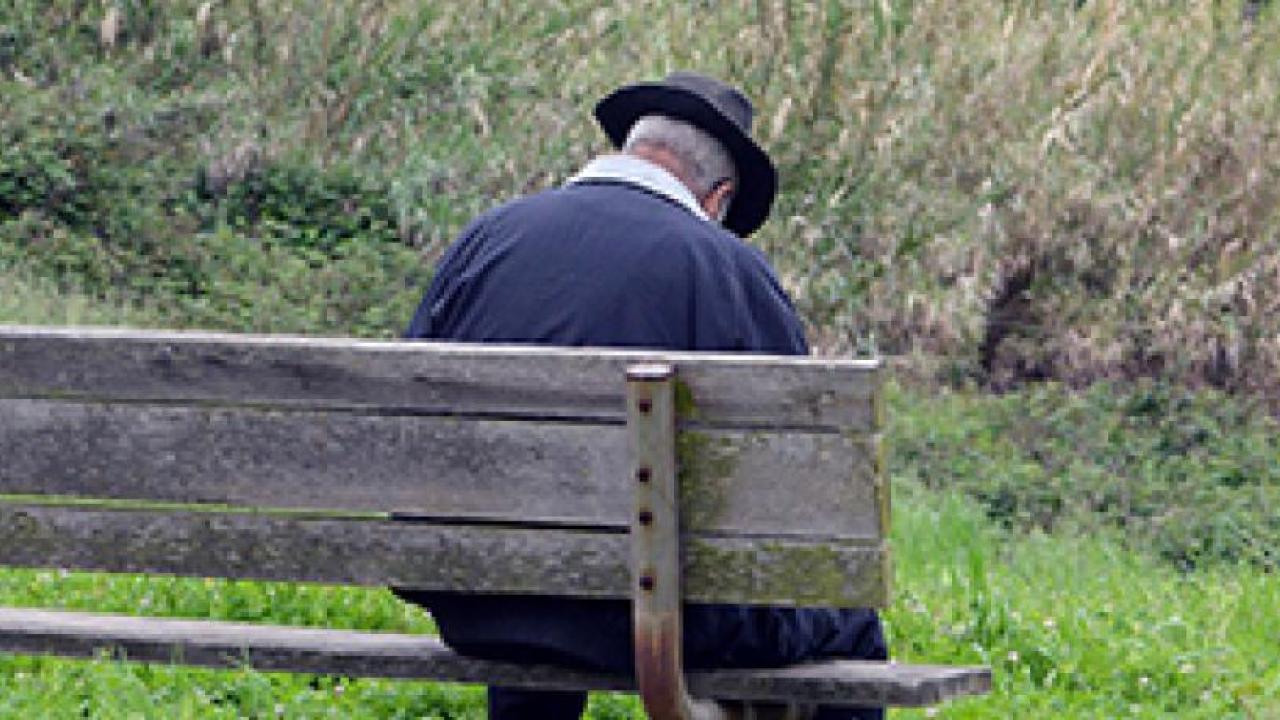
Harvard-UC Davis Researchers: New Drug Candidate May Help Cancer Patients Undergoing Immunotherapy
International Team Calls Research 'A Promising New Strategy in Cancer Therapy”
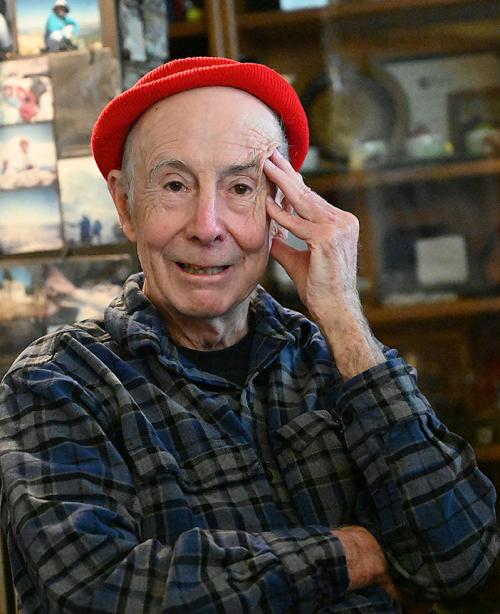
An enzyme inhibitor and now drug candidate discovered in the laboratory of Bruce Hammock, University of California, Davis, may help control the often dangerous side effects of immunotherapy treatments in cancer patients, according to newly published research in the Proceedings of the National Academy of Sciences (PNAS).
The 18-member international research team, led by Harvard Medical School researcher-physician Dipak Panigrahy and Hammock praised immunotherapy as “a promising new strategy in cancer therapy.” However, they cautioned that immunotherapies, like other cancer treatments, are “double-edge swords,” yielding both favorable and unfavorable consequences that can lead to the reoccurrence and spread of the cancer.
The paper, “Enhancing Cancer Immunotherapy via Inhibition of Soluble Epoxide Hydrolase,” appears in the Feb. 5th issue of PNAS.
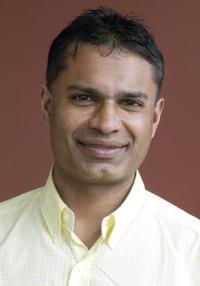
“In mouse models of multiple cancers, we discovered that we could reduce or clear the immunotherapy-generated inflammation by inhibiting or blocking the enzyme, soluble epoxide hydrolase (sEH), which degrades natural inflammation-resolving lipids, and that we can enhance these positive effects further with dietary omega-3 fatty acids,” said Hammock, who holds a joint appointment with the Department of Entomology and Nematology and the UC Davis Comprehensive Cancer Center. A member of the UC Davis faculty since 1980, he has researched the sEH and inflammation-resolving lipids for 50 years.
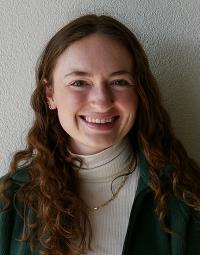
“Basically, when we blocked the sEH enzyme and increased inflammation resolving epoxides of fatty acids, we prevented melanoma, prostate, and bladder cancer growth following immunotherapy by stimulating the resolution of inflammation,” said Panigrahy, trained in surgery at Boston University, and a member of the pathology faculty, Beth Israel Deaconess Medical Center, Boston, and Harvard Medical School. “New strategies to improve the efficacy of immune checkpoint blockade is a major clinical need. Immunotherapy is limited by tumor-promoting inflammation and dose-limiting toxicities. Cytokines stimulate inflammation that is harmful for immunotherapy to be effective via cytotoxic T cell immunity.”
First author Abigail Kelly, a Harvard Medical School researcher and a neuroscience PhD student at the University of Virginia, explained that “immunotherapy results in excessive inflammation and a cytokine/lipid storm caused by the human body’s reaction to this cancer therapy. This cancer therapy itself increases sEH expression, which degrades inflammation resolving fatty acid epoxides thus triggering a storm of pro-inflammatory and pro-angiogenic lipid autacoid and cytokine mediators.”

Co-senior author Haixia Yang, a professor at China Agricultural University, Beijing, lamented that the cytokine storms are often fatal. “We propose that this drug combination targeting immuno-nutrition will alleviate the often-fatal cytokine storms that occur when the immune system is overwhelmed as when the patient is battling for survival. Inhibition of sEH is a new strategy to transform the tumor inflammatory profile to the benefit of the patient.”
Primo Lara, director of the UC Davis Comprehensive Cancer Center and an oncologist and clinical scientist not involved in the study, stressed the importance of controlling inflammatory response. “Controlling the body’s inflammatory response to immunotherapy is clearly important to prevent metastasis and reoccurrence of cancer,” he said. “These scientists moved upstream to not so much block as to modulate and resolve the cytokine storm and thus improve immunotherapies for cancer treatment.”
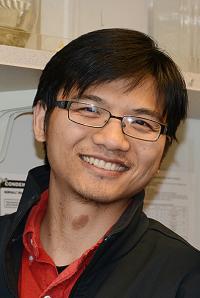
Double-Edged Sword
“During immunotherapy or surgery, dying cancer cells can trigger inflammation and the growth of microscopic cancerous cells,” said UC Davis Health oncologist Nicholas Mitsiades, professor of medicine, associate director for Translational Research, UC Davis Comprehensive Cancer Center, and a co-author of the paper. Noting that “cancer therapy is a double-edged sword,” Mitsiades said that “surgery and immunotherapy can induce an inflammatory/immunosuppressive injury response that promotes dormancy escape and tumor recurrence. The studies with the Panigrahy-Hammock laboratories point toward a new approach to enhance the effectiveness of current cancer therapies and potentially prevent tumor recurrence.”
Elusive Goal
In an adjoining commentary in the PNAS issue, lead author David Potter, an oncologist and professor at the University of Minnesota Medical School, Minneapolis, wrote that “Balancing anti-tumor activity and suppression of inflammatory toxicities of immuno-oncology therapy has been an elusive goal of cancer therapeutics” and that this latest research shows considerable promise to expand the use and safety of immunotherapy .
The American Cancer Society projected 1.9 million new cancer cases in 2023 in the United States, and 609,360 cancer deaths.
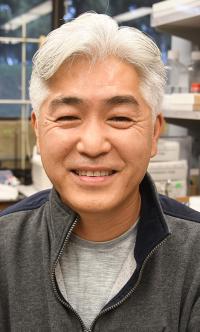
“The success of immune checkpoint inhibitors or ICI has created a new field of therapy-induced autoimmunity,” said Leonard Zon, the Grousbeck Professor of Pediatric Medicine at Harvard Medical School and an investigator with the Howard Hughes Medical Institute (and not involved with the study). “Finding methods as suggested by this paper to mitigate deleterious autoimmunity would greatly enhance the use and success of ICI. The methods to alter eicosanoids by Kelly et al could have an important impact to limiting autoimmunity due to ICI.”
“We were pleased to see that soluble epoxide hydrolase inhibitors increased efficacy and reduced toxicity of several cancer immunotherapies evaluated in this paper,” continued Zon, a fellow of the National Academy of Sciences. “These early data suggest a potential for sEHI to improve the duration, safety, and efficacy of checkpoint inhibitors in cancer therapy.”
UC Davis distinguished professor Kit Lam, a UC Davis Health oncologist and researcher (not associated with the research), noted that “Only a subset of patients respond to immunotherapy. “Immunotherapy stimulates a pro-inflammatory cytokine storm via in part by the induction of the enzyme sEH. Inhibition of the sEH is a promising path to improve the efficacy and safety of cancer immunotherapy. Particularly by also combining the drug with dietary omega-3 fatty acids these studies offer a new molecular mechanism to target both pharmaceutics and nutrition to enhance cancer therapy for cancer patients.”
Human Clinical Trials
EC5026, a drug candidate based on research in the Hammock laboratory. is moving through human safety trials, after the U.S. Food and Drug Administration fast-tracked it as a novel non-narcotic oral analgesics designed to inhibit the sEH enzyme.
UC Davis researcher Cindy McReynolds and chief executive officer of EicOsis Human Health LLC (not associated with the study), expressed her optimism that the inhibitor will help cancer patients in immunotherapy. “We are pleased to see that soluble epoxide hydrolase inhibitors we are developing increased efficacy and reduced toxicity of several cancer immunotherapies evaluated in this paper. These early data suggest a potential for sEHI to improve the duration, safety, and efficacy of checkpoint inhibitors in cancer therapy.”
Dr. Darryl Zeldin, scientific director of the National Institute of Environmental Health Sciences (NIEHS) of the National Institutes of Health (NIH), commented: “For over three decades, I have collaborated with the Hammock laboratory on the inflammation-resolving power of epoxy fatty acids. Together, we have tried to better understand how these naturally occurring compounds are stabilized by inhibitors of the soluble epoxide hydrolase enzyme. It is exciting to see that these inhibitors are now in early phase clinical trials to evaluate their safety and efficacy in reducing the toxicity of check point inhibitors which are used to treat multiple types of cancer. The field is eagerly awaiting the results of these trials.”
“Since the sEH inhibitors are currently in phase 1b human safety trials and omega 3 lipids are natural dietary components, there is hope to reach cancer patients in the near future,” Panigrahy said. “Also, the inhibition of the sEH could have broad implications in alleviating the inflammatory, and in some cases, the fatal ‘cytokine storm’ that can occur in use of immune checkpoint therapies but also in such cases as severe coronavirus disease (COVID-19), caused by the SARS-CoV-2 virus, as well as immunotherapy or immunological emergencies, including the graft-versus-host disease.”
Four scientists served as lead authors of the paper:
- Weicang Wang, a Hammock lab alumnus and now an assistant professor at Purdue University
- Jun Yang, a mass spectrometrist in the Hammock lab
- Eva Rothenberger, a first-year PhD student at Harvard Medical School
- Molly Gilligan, a medical resident at Columbia University
Sung Hee Hwang of the Hammock lab made many of the sEH inhibitors and their lipid epoxide substrates.
Butterfly Metamorphis
Hammock, a fellow of the National Academy of Sciences and the National Academy of Inventors, founded the Davis-based EicOsis in 2011 to alleviate chronic pain and inflammation. His studies on butterfly metamorphosis—"how caterpillars turn into butterflies”—sparked his 50-year research program on regulatory enzymes and their inhibitors leading to the drugs now in human trials. Hammock added, “It is always important to realize that the most significant translational science we do in the university is fundamental science.”
The research drew principal funding from NIH through two grants to Hammock: the NIEHS Superfund Research Program, and the NIH RIVER (Revolutionizing Innovative, Visionary Environmental Health Research) Program. Three other grants also helped fund the research: Credit Unions Kids at Heart and the C.J. Buckley Pediatric Brain Tumor Fund, both awarded to Panigrahy; and a National Key Research and Development Program grant to Haixia Yang.
(Editor's Note: The PNAS news embargo lifted at noon Feb. 5, 2024, Pacific Time. but there's a delay. PNAS will publish the research paper sometime the week of Feb. 12-16.)
News Media Inquiries:
UC Davis distinguished professor Bruce Hammock, bdhammock@ucdavis.edu
Download high resolution images of researchers
https://photos.app.goo.gl/myUQupAnvKjAZ2pH9
